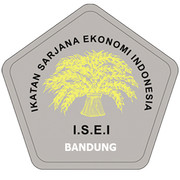On the Rise of Social Media Influencer Marketing: A Systematic Literature Review and Future Research Agenda
Abstract
Keywords
Full Text:
PDFReferences
Appel, G., Grewal, L., Hadi, R., & Stephen, A. T. (2020). The future of social media in marketing. Journal of the Academy of Marketing Science, 48(1), 79-95. https://doi.org/10.1007/s11747-019-00695-1
Audrezet, A., & Charry, K. (2019). Do Influencers Need to Tell Audiences They’re Getting Paid? Harvard Business Review Digital Articles online.
Boerman, S. C., & Van Reijmersdal, E. A. (2020). Disclosing influencer marketing on YouTube to children: The moderating role of para-social relationship. Frontiers in Psychology, 10, 3042. https://doi.org/10.3389/fpsyg.2019.03042
Colliander, J., & Erlandsson, S. (2015). The blog and the bountiful: Exploring the effects of disguised product placement on blogs that are revealed by a third party. Journal of Marketing Communications, 21(2), 110-124. https://doi.org/10.1080/13527266.2012.730543
Cooke, F. L., Wood, G., Wang, M., & Veen, A. (2019). How far has international HRM travelled? A systematic review of literature on multinational corporations (2000–2014). Human Resource Management Review, 29(1), 59-75. https://doi.org/10.1016/j.hrmr.2018.05.001
De Jans, S., & Hudders, L. (2020). Disclosure of vlog advertising targeted to children. Journal of Interactive Marketing, 52, 1-19. https://doi.org/10.1016/j.intmar.2020.03.003
De Jans, S., Cauberghe, V., & Hudders, L. (2018). How an advertising disclosure alerts young adolescents to sponsored vlogs: The moderating role of a peer-based advertising literacy intervention through an informational vlog. Journal of advertising, 47(4), 309-325. https://doi.org/10.1080/00913367.2018.1539363
De Veirman, M., & Hudders, L. (2020). Disclosing sponsored Instagram posts: the role of material connection with the brand and message-sidedness when disclosing covert advertising. International journal of advertising, 39(1), 94-130. https://doi.org/10.1080/02650487.2019.1575108
Erz, A., Marder, B., & Osadchaya, E. (2018). Hashtags: Motivational drivers, their use, and differences between influencers and followers. Computers in Human Behavior, 89, 48-60. https://doi.org/10.1016/j.chb.2018.07.030
Ge, J., & Gretzel, U. (2018). Emoji rhetoric: a social media influencer perspective. Journal of Marketing Management, 34(15-16), 1272-1295. https://doi.org/10.1080/0267257X.2018.1483960
Hinz, O., Skiera, B., Barrot, C., & Becker, J. U. (2011). Seeding strategies for viral marketing: An empirical comparison. Journal of Marketing Management, 75(6), 55-71. https://doi.org/10.1509/jm.10.0088
Hwang, Y., & Jeong, S.-H. (2016). “This is a sponsored blog post, but all opinions are my own”: The effects of sponsorship disclosure on responses to sponsored blog posts. Computers in Human Behavior, 62, 528-535. https://doi.org/10.1016/j.chb.2016.04.026
Kamaldeep, S. (2021). Influencer marketing from a consumer perspective: how attitude, trust, and word of mouth affect buying behavior. European Integration Studies, 15(1), 231-241.
Kay, S., Mulcahy, R., & Parkinson, J. (2020). When less is more: the impact of macro and micro social media influencers’ disclosure. Journal of Marketing Management, 36(3-4), 248-278. https://doi.org/10.1080/0267257X.2020.1718740
Kim, D. Y., & Kim, H.-Y. (2021). Influencer advertising on social media: The multiple inference model on influencer-product congruence and sponsorship disclosure. Journal of Business research, 130, 405-415. https://doi.org/10.1016/j.jbusres.2020.02.020
Lanz, A., Goldenberg, J., Shapira, D., & Stahl, F. (2019). Climb or jump: Status-based seeding in user-generated content networks. Journal of Marketing Research, 56(3), 361-378. https://doi.org/10.1177/0022243718824081
Lin, H.-C., Bruning, P. F., & Swarna, H. (2018). Using online opinion leaders to promote the hedonic and utilitarian value of products and services. Business horizons, 61(3), 431-442. https://doi.org/10.1016/j.bushor.2018.01.010
McQuarrie, E. F., Miller, J., & Phillips, B. J. (2013). The megaphone effect: Taste and audience in fashion blogging. Journal of consumer research, 40(1), 136-158. https://doi.org/10.1086/669042
Stubb, C., & Colliander, J. (2019). “This is not sponsored content”–The effects of impartiality disclosure and e-commerce landing pages on consumer responses to social media influencer posts. Computers in Human Behavior, 98, 210-222. https://doi.org/10.1016/j.chb.2019.04.024
Tandon, U., Kiran, R., & Sah, A. N. (2018). The influence of website functionality, drivers and perceived risk on customer satisfaction in online shopping: an emerging economy case. Information Systems e-Business Management, 16(1), 57-91. https://doi.org/10.1007/s10257-017-0341-3
Van Reijmersdal, E. A., Rozendaal, E., Hudders, L., Vanwesenbeeck, I., Cauberghe, V., & van Berlo, Z. M. (2020). Effects of disclosing influencer marketing in videos: An eye tracking study among children in early adolescence. Journal of Interactive Marketing, 49, 94-106. https://doi.org/10.1016/j.intmar.2019.09.001
Voorveld, H. A. (2019). Brand communication in social media: A research agenda. Journal of Advertising, 48(1), 14-26. https://doi.org/10.1080/00913367.2019.1588808
Vrontis, D., Makrides, A., Christofi, M., & Thrassou, A. (2021). Social media influencer marketing: A systematic review, integrative framework and future research agenda. International Journal of Consumer Studies, 45(4), 617-644. https://doi.org/10.1111/ijcs.12647
Watts, D. J., & Dodds, P. S. (2007). Influentials, networks, and public opinion formation. Journal of Consumer Research, 34(4), 441-458. https://doi.org/10.1086/518527
Yang, M., & Gabrielsson, P. (2018). The interface of international marketing and entrepreneurship research: review, synthesis, and future directions. Journal of International Marketing, 26(4), 18-37. https://doi.org/10.1177/1069031X18809988
DOI: https://doi.org/10.17509/image.2024.004
Refbacks
- There are currently no refbacks.
Copyright (c) 2024 Pearl Fafa Bansah, Vanessa Gaffar, Disman Disman, Ayu Krishna Yuliawati
License URL: https://creativecommons.org/licenses/by-sa/4.0/
Image : Jurnal Riset Manajemen is licensed under a Creative Commons Attribution-ShareAlike 4.0 International License
View My Stats



